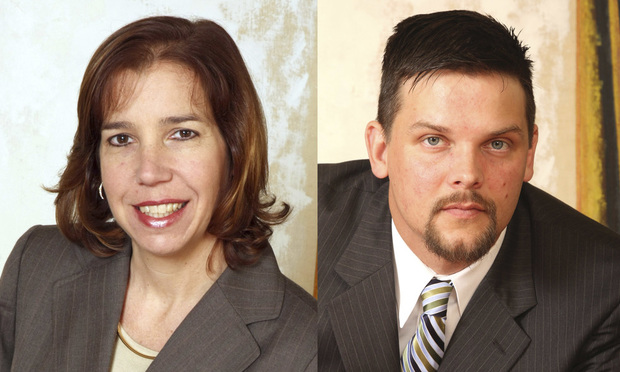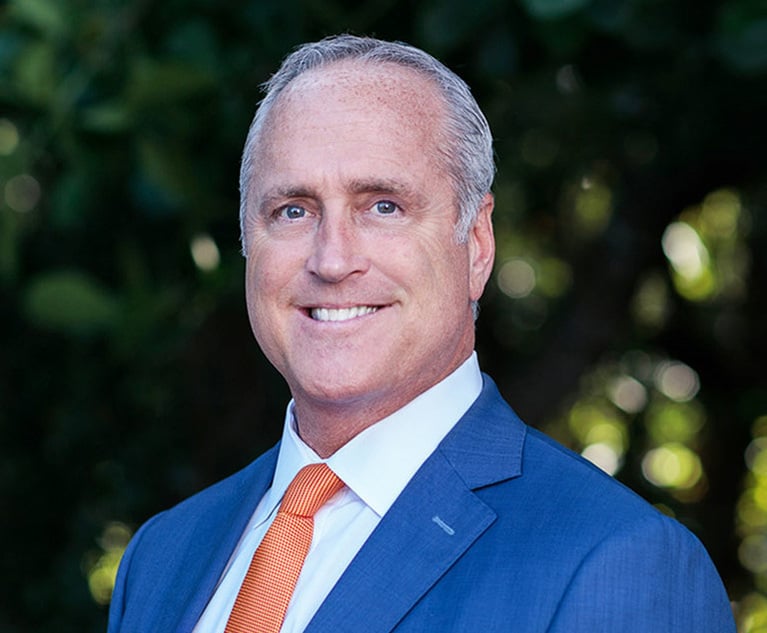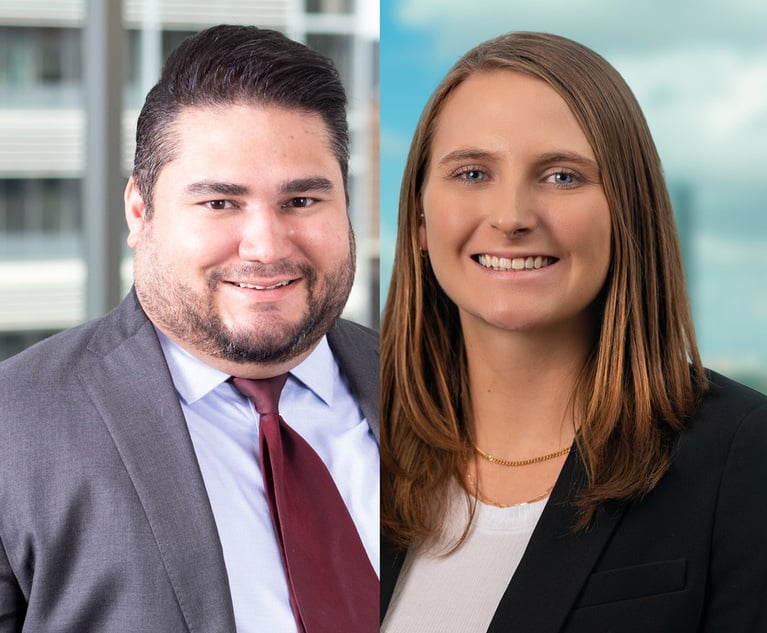Are There New Opportunities for South Florida Investors in Treasury's New Rules?
Qualified Opportunity Zones were created as a provision of the Tax Cuts and Jobs Act of 2017 (the act). They were designed to encourage investment and real estate development in distressed communities, by offering significant income tax savings and deferrals for investment in such areas.
May 14, 2019 at 09:44 AM
5 minute read
 Rosamaria Bravo, left, and Erick R. Wendelken, right.
Rosamaria Bravo, left, and Erick R. Wendelken, right.
Qualified Opportunity Zones were created as a provision of the Tax Cuts and Jobs Act of 2017 (the act). They were designed to encourage investment and real estate development in distressed communities, by offering significant income tax savings and deferrals for investment in such areas.
The IRS defines a Qualified Opportunity Zone as “an economically distressed community where new investments, under certain conditions, may be eligible for preferential tax treatment. Localities qualify as Opportunity Zones if they have been nominated for that designation by the state and that nomination has been certified by the Secretary of the U.S. Treasury via his delegation authority to the Internal Revenue Service.”
As designed, the program offers a number of federal income tax benefits to investors including:
- The ability to defer paying taxes on capital gains until 2026;
- The ability to exclude up to 15% of the capital gain from taxation in 2026; and
- If the investment in the zone is held for at least 10 years, all appreciation is tax free.
Back in October 2018, the Department of the Treasury and the IRS announced the release of new guidelines for investing in Qualified Opportunity Zones (QOZ).
On April 17, the Treasury Department released its highly anticipated “second round” of proposed regulations designed to clarify the benefits of the program, and make it easier for investors to take advantage of them.
Key Clarifications for Those Interested in Investing in a Qualifying Opportunity Fund
Most of the proposed guidelines for investing in a qualifying opportunity fund (QOF) are friendly to investors, and should encourage the kinds of economic development intended.
With many investors considering Qualified Opportunity Funds, these regulations will provide important updates and clarity on many of the statutory rules and address many of the unanswered questions about the requirements of QOF investments.
The proposed new rules are set forth in a document over 150 pages long, and still have a layer of complexity that may require some deeper analysis. Here are a few key takeaways from our initial thoughts on the second round of proposed regulations.
Fifty percent of gross income has to come from an active business inside the zone—the new proposed regulations clarify how this requirement is met:
- Hours safe harbor—if at least 50% of services performed (based on hours) of employees and independent contractors are performed within the QOZ;
- Compensation safe harbor—if at least 50% of services performed (based on amounts paid) of employees and independent contractors are performed within the QOZ;
- Property and management safe harbor—if tangible property and management or operational functions needed to produce 50% of the revenue are in the QOZ.
- Facts and circumstances—business can otherwise show that 50% of revenue is generated in the opportunity zone.
This clarification is especially important for operating businesses and confirms that location of customer is not a determining factor.
Questions regarding the original use requirement have also been clarified.
- A building that has been vacant or unused for five years will meet the original use requirement;
- The purchase of newly constructed property (not previously placed in service) from a seller will also qualify; and
- Leased property—The proposed regulations also provide that leased property can qualify as qualified opportunity zone business property (QOZBP) while not subject to the original use or substantial improvement requirement, as long as the lease was entered into after Dec. 31, 2017, and calls for arm's length terms. Related party leases are also allowed but subject to a few more requirements.
There were however, two points of clarification in the new guidance that we feel were not so taxpayer friendly:
- If investor is deferring Section 1231 gain, the investment cannot be made until year end once all 1231 gains and losses are netted to determine if investor has an overall eligible gain; and
- QOF benefits will not apply to a carried interest since in general this is granted in exchange for services and not from the contribution of eligible gain.
What Does This All Mean for South Florida Investors?
Since the law was passed in December 2017, one of the complaints leveled against the administration is that it focused too much on real estate projects. The proposed rules lessen that concern by providing pathways that make it easier for investors who hope to fund new coffee shops, grocery stores, or other business operations.
President Donald Trump has welcomed the regulations. “As you know,” he said at the White House, “this vital provision gives businesses a massive incentive to invest and create jobs in our nation's most underserved communities.”
The recently released regulations are not the final rules governing the Qualified Opportunity Zone program. They were released to provide a guidance so that investors can strategize how to take part in the program with more confidence.
Rosamaria D. Bravo, CPA, is a principal in the tax and accounting department at MBAF in Miami.
Erick R. Wendelken, CPA, is a principal in the tax and accounting department at the firm. He has been in the public accounting profession since 1999 and joined MBAF in 2001.
This content has been archived. It is available through our partners, LexisNexis® and Bloomberg Law.
To view this content, please continue to their sites.
Not a Lexis Subscriber?
Subscribe Now
Not a Bloomberg Law Subscriber?
Subscribe Now
NOT FOR REPRINT
© 2025 ALM Global, LLC, All Rights Reserved. Request academic re-use from www.copyright.com. All other uses, submit a request to [email protected]. For more information visit Asset & Logo Licensing.
You Might Like
View All

Don’t Forget the Owner’s Manual: A Guide to Proving Liability Through Manufacturers’ Warnings and Instructions
5 minute read

Trending Stories
Who Got The Work
J. Brugh Lower of Gibbons has entered an appearance for industrial equipment supplier Devco Corporation in a pending trademark infringement lawsuit. The suit, accusing the defendant of selling knock-off Graco products, was filed Dec. 18 in New Jersey District Court by Rivkin Radler on behalf of Graco Inc. and Graco Minnesota. The case, assigned to U.S. District Judge Zahid N. Quraishi, is 3:24-cv-11294, Graco Inc. et al v. Devco Corporation.
Who Got The Work
Rebecca Maller-Stein and Kent A. Yalowitz of Arnold & Porter Kaye Scholer have entered their appearances for Hanaco Venture Capital and its executives, Lior Prosor and David Frankel, in a pending securities lawsuit. The action, filed on Dec. 24 in New York Southern District Court by Zell, Aron & Co. on behalf of Goldeneye Advisors, accuses the defendants of negligently and fraudulently managing the plaintiff's $1 million investment. The case, assigned to U.S. District Judge Vernon S. Broderick, is 1:24-cv-09918, Goldeneye Advisors, LLC v. Hanaco Venture Capital, Ltd. et al.
Who Got The Work
Attorneys from A&O Shearman has stepped in as defense counsel for Toronto-Dominion Bank and other defendants in a pending securities class action. The suit, filed Dec. 11 in New York Southern District Court by Bleichmar Fonti & Auld, accuses the defendants of concealing the bank's 'pervasive' deficiencies in regards to its compliance with the Bank Secrecy Act and the quality of its anti-money laundering controls. The case, assigned to U.S. District Judge Arun Subramanian, is 1:24-cv-09445, Gonzalez v. The Toronto-Dominion Bank et al.
Who Got The Work
Crown Castle International, a Pennsylvania company providing shared communications infrastructure, has turned to Luke D. Wolf of Gordon Rees Scully Mansukhani to fend off a pending breach-of-contract lawsuit. The court action, filed Nov. 25 in Michigan Eastern District Court by Hooper Hathaway PC on behalf of The Town Residences LLC, accuses Crown Castle of failing to transfer approximately $30,000 in utility payments from T-Mobile in breach of a roof-top lease and assignment agreement. The case, assigned to U.S. District Judge Susan K. Declercq, is 2:24-cv-13131, The Town Residences LLC v. T-Mobile US, Inc. et al.
Who Got The Work
Wilfred P. Coronato and Daniel M. Schwartz of McCarter & English have stepped in as defense counsel to Electrolux Home Products Inc. in a pending product liability lawsuit. The court action, filed Nov. 26 in New York Eastern District Court by Poulos Lopiccolo PC and Nagel Rice LLP on behalf of David Stern, alleges that the defendant's refrigerators’ drawers and shelving repeatedly break and fall apart within months after purchase. The case, assigned to U.S. District Judge Joan M. Azrack, is 2:24-cv-08204, Stern v. Electrolux Home Products, Inc.
Featured Firms
Law Offices of Gary Martin Hays & Associates, P.C.
(470) 294-1674
Law Offices of Mark E. Salomone
(857) 444-6468
Smith & Hassler
(713) 739-1250






